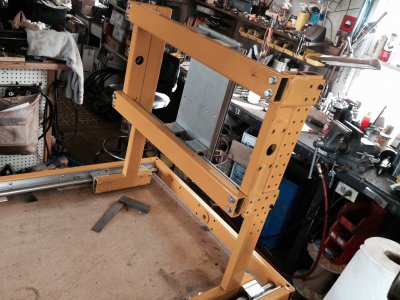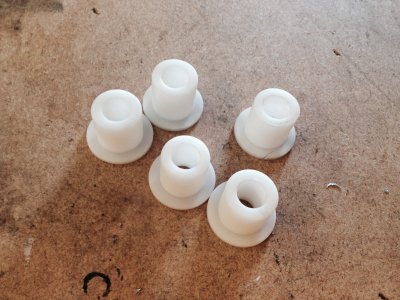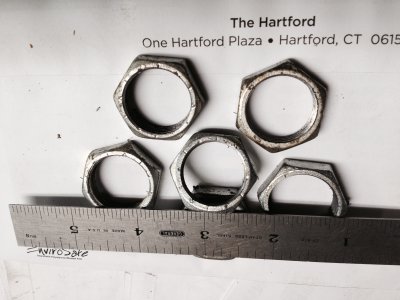- Joined
- Jan 23, 2012
- Messages
- 1,216
i have painstakingly built and assembled the gantry assembly as shown, not I'm into ball screws and bushings and need an opinion or two. i have made Delrin bushings that press into the holes that are machined into each end of the "X" & "Y" locations, and carefully turned and bored these bushings to fit nicely. the bore on them is +.001-.002 and they feel good on the ball screw shafts. what ramifications would there be if they were say +.003 +.005 or even a bit more, when the motors turn either direction quickly ?
the motors are or will be direct coupled to the screws with aluminum semi flex couplings and set screws to keep them secured. maybe roll pins should be added also ? I'm to the point where i will install them and really don't want to re-do any more than i already have. thanks in advance.

the motors are or will be direct coupled to the screws with aluminum semi flex couplings and set screws to keep them secured. maybe roll pins should be added also ? I'm to the point where i will install them and really don't want to re-do any more than i already have. thanks in advance.







